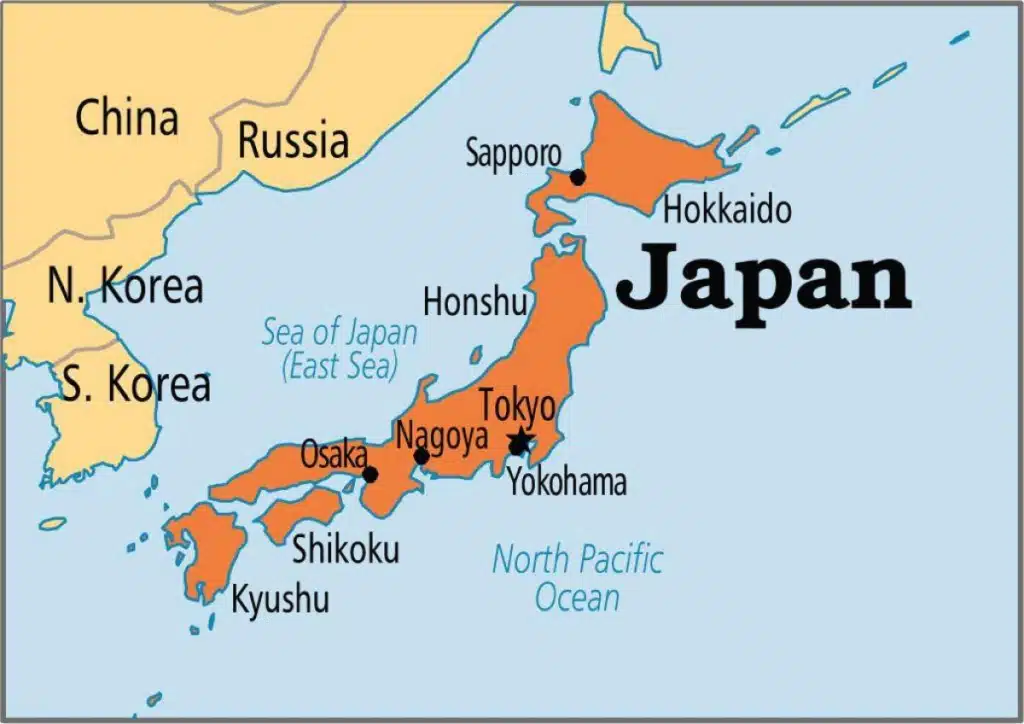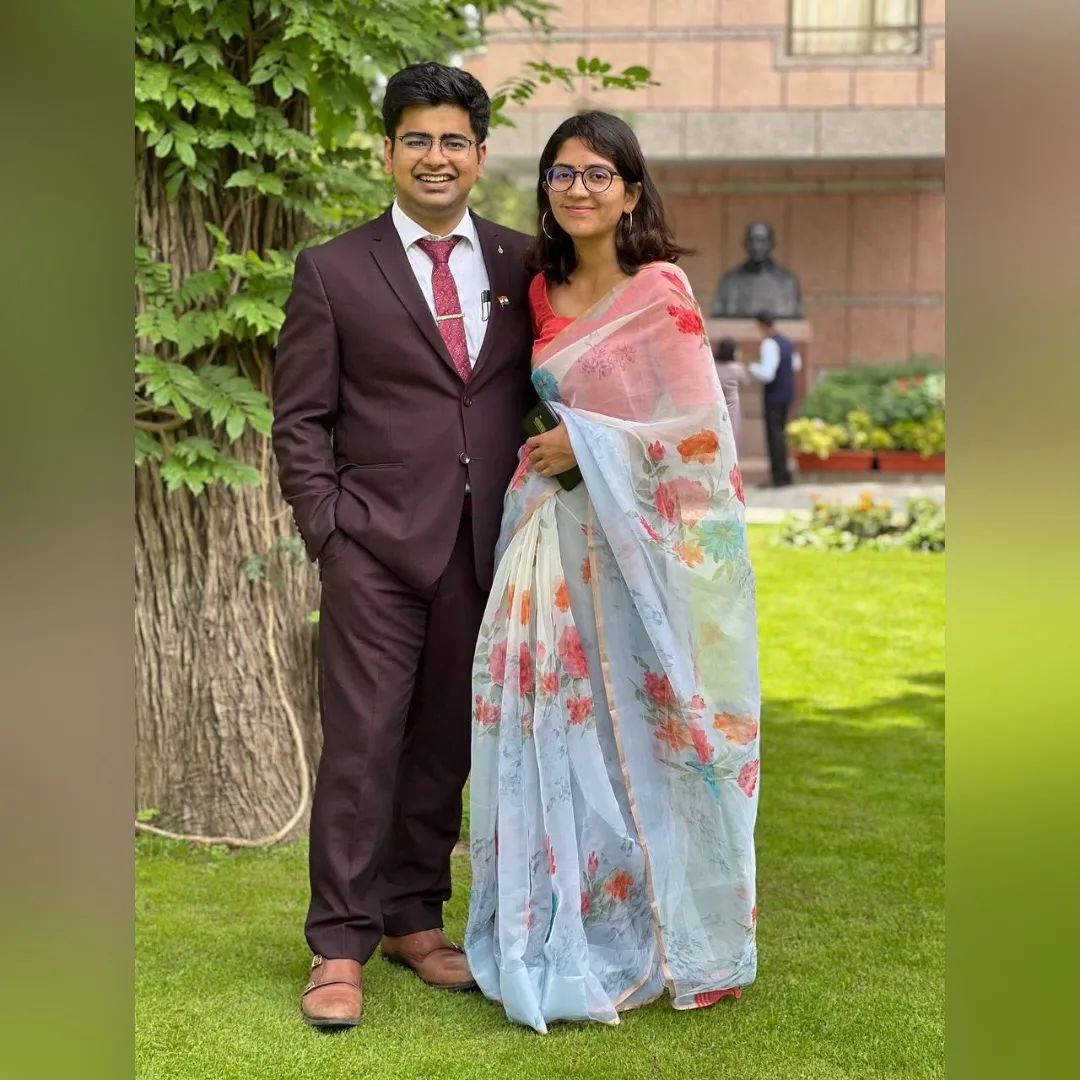
• India-Japan Relations, or the friendship between India and Japan, has a long past based on spiritual similarity and strong cultural and civilizational ties. Swami Vivekananda, Gurudev Rabindranath Tagore, JRD Tata, and Netaji Subhash Chandra Bose were all well-known Indians who had ties to Japan in the modern era.
• The Japan-India Association, which has been around since 1903, is Japan’s oldest foreign friendship group.
• Because of this shared history, the two countries have never been at odds with each other.
• There have never been any disagreements between the two countries about ideas, cultures, or land. The good things from the old association have been carried on by the new nation states.
Table of Contents
- 1 Areas of Cooperation
- 2 Political
- 3 Economic and Commercial
- 4 Science and Technology
- 5 Cultural
- 6 Indian Diaspora
- 7 Defence
- 8 India-Japan Civil Nuclear Deal
- 9 Health
- 10 How Japan is Important to India
- 11 Strategic Reasons
- 12 Economic
- 13 How important India is to Japan
- 14 Demographic Dividend
- 15 Significance for the Region
- 16 Challenges to the bilateral relations
- 17 The Next Steps
- 18 Conclusion
Areas of Cooperation
Political
• Both sides started meeting at the summit level as early as 1957. This brought the relationship to a new level.
• The Suzuki Motor Corporation’s groundbreaking investment at the beginning of the 1980s changed the way cars were made and managed in India. This was a big step forward in the relationship between the two countries. This was a major turning point in India’s economic history.
• Japan was seen as a good friend in 1991, when it was one of the few countries that helped India get out of a financial disaster without any conditions.
• The Japan-India Global Partnership in the 21st Century started in the year 2000.
• In 2006, the partnership was upgraded to a “Global and Strategic Partnership,” and the Prime Ministers have met every year since then.
• In 2011, Japan and India came to an agreement called the Comprehensive Economic Partnership Agreement (CEPA).
• In 2014, the partnership between the two countries was upgraded to a “Special Strategic and Global Partnership.”
• In 2015, India stated that all Japanese tourists and business travellers could get a “visa on arrival.”
• A JPY 1.3 trillion “Japan-India Make in India Special Finance Facility” was also set up.
• In 2016, MoUs were signed in a wide range of areas, such as cooperation in the peaceful uses of nuclear energy, manufacturing skill transfer programme, outer space marine, earth and atmospheric science and technology, agriculture and food-related industry, transportation and urban development, textiles, cultural exchange, and sports.
• A mission statement was made public at the 13th annual summit, which was held in Japan. They also made a $75 billion deal to swap currencies, which would help make India’s foreign exchange and capital markets more stable.
• AAGC: Prime Ministers Narendra Modi and Shinzo Abe came up with the idea of the Asia-Africa Growth Corridor (AAGC) in a joint statement they released in November 2016. The AAGC wants to create a plan for sustainable growth that focuses on people and involves many different stakeholders. The AAGC will be built on four pillars: Development and Cooperation Projects, Quality Infrastructure and Institutional Connectivity, Enhancing Capabilities, and Skills and People-to-People Partnership.
Economic and Commercial
• The India-Japan Comprehensive Economic Partnership Agreement (CEPA), which went into effect in August 2011, includes not only trade in goods but also trade in services, movement of natural persons, investments, intellectual property rights, customs procedures, and other trade-related issues.
• Since 1958, Japan has given India mutual loans and grants. Japan is the largest bilateral donor to India.
• Japan’s Official Development Assistance (ODA) helps India improve things like power, transportation, and the environment.
• Japan is involved in the Ahmedabad-Mumbai High Speed Rail, the Western Dedicated Freight Corridor (DFC), the Delhi Mumbai Industrial Corridor, the Chennai-Bengaluru Industrial Corridor (CBIC), and the Delhi Metro Project.
• Trade between India and Japan was worth US$ 15.7 billion in 2016-17. In 2017-18, India sent $4.73 billion worth of goods to Japan, while it bought $10.97 billion worth of goods from Japan. In 2020, Japan was India’s 12th biggest trade partner.
• India’s main exports to Japan are petroleum products, chemicals, elements, compounds, nonmetallic mineral ware, fish and fish products, metalliferous ores and scrap, clothing and accessories, iron and steel products, textile yarn, fabrics, machines, etc.
• The main things India buys from Japan are machinery, transportation equipment, iron and steel, electronic goods, organic chemicals, machine tools, etc.
• FDI from Japan into India was worth $4.7 billion in the 2016–17 fiscal year. Japan’s direct investments in India have grown, and in FY2020, Japan was the fourth biggest investor in India. Most Japanese foreign direct investment (FDI) in India is in the automotive, electrical, telecoms, chemical, and pharmaceutical industries.
• Japan and India have decided to work together on developing India’s manufacturing workforce through a programme called “Manufacturing Skill Transfer Promotion Programme.” This programme will help train 30000 young people in India.
• When the Indian Prime Minister went to Japan in 2014, Japan agreed to spend $35 billion in India over the next five years. This money will go towards big projects like smart cities, the Delhi-Mumbai Industrial Corridor, and the Shinkansen Bullet Train.
• More and more Japanese companies are doing business in India. There were 1,305 Japanese companies registered in India as of October 2016.
• Talks have started about putting together a “Platform for Japan-India Business Cooperation in the Asia-Africa Region” to help Japanese and Indian companies work together to build industrial corridors and networks in the area.
Science and Technology
• In 1985, both countries signed an agreement to work together on science and technology.
• The India-Japan Science Council (IJSC) was set up in 1993. Since then, it has held 19 yearly meetings and helped fund 250 joint projects.
• Since 2006, the science agencies of both countries have signed a number of Institutional Agreements/MoUs in areas like life sciences, material sciences, high energy physics, ICT, biotechnology, healthcare, methane hydrate, robotics, alternative sources of energy, earth sciences, outer space, etc.
• A comprehensive India-Japan Digital Partnership was started with the goal of creating Internet of Things (IoT) and artificial intelligence (AI) solutions that help society. They also want to work together on new technologies by using the “Japan-India Start-Up Hub” in Bengaluru and the NASSCOM IT corridor project in Hiroshima Prefecture.
Cultural
• From May 2015 to September 2017, about 560 students went to Japan as part of the annual “Japan Asia Youth Exchange Programme in Science,” also called the “SAKURA Exchange Programme.”
• Beginning in the 1870s, Indians began going to Japan for business and trade reasons.
• In May 1957, India and Japan reached a deal about their cultures.
• In September 2009, the Vivekananda Cultural Centre opened in Tokyo. Yoga, Tabla, Bharatanatyam, Odissi, Sambalpuri, Bollywood dances, and the Hindi and Bengali languages are taught at the Centre.
• From October 2014 to September 2015, the Festival of India in Japan 2014-15 took place.
• On June 18, 2017, Japan marked International Day of Yoga in a big way.
• India and Japan have agreed that 2017 will be the “Year of Friendly Exchanges.”
• The Indian people who lived in Japan mainly traded cloth, goods, electronics, and gems and jewellery.
• In the past few years, a lot of professionals have moved to the country. These include IT experts and engineers who work for Indian and Japanese companies, as well as experts in management, banking, education, and S&T research.
• The Tokyo neighbourhood of Nishikasai is becoming a “mini-India.” Three Indian schools were opened in Tokyo and Yokohama because their number was growing.
Indian Diaspora
• The Indian community has changed in recent years because a lot of professionals have moved there. This includes IT pros and engineers who work for Indian and Japanese companies, as well as people who work in management, finance, education, and S&T research.
Defence
• The “India-Japan strategic partnership” is the basis for India and Japan to work together on defence.
• There are also different ways for Japan and India to talk about security and defence. Some of these are the “2+2” meeting, the annual Defence Ministerial conversation, and the Coast Guard-to-Coast Guard conversation.
• Joint drills: The defence forces of India and Japan put on a number of drills together. These include JIMEX, SHINYUU Maitra, and Dharma Guardian. Both countries also take part in Malabar with the United States.
• The Quad alliance is an informal strategic dialogue between India, the United States, Japan, and Australia. Its goal is to make sure and support a “free, open, and prosperous” Indo-Pacific area.
• India is in talks to buy the Japanese ShinMaywa US-2i amphibious aircraft for $1.65 billion for the Indian Navy so that it can cover the larger Indian Ocean Region (IOR).
India-Japan Civil Nuclear Deal
• The nuclear partnership between India and Japan is very important because China doesn’t want to support India’s bid to join the NSG.
• Japan broke its rule that it wouldn’t do business with any country that hadn’t signed the Nuclear Non-Proliferation Treaty (NPT). For the last six years, the two countries worked hard to come to an agreement on this deal. This is a big change, especially when compared to how Japan acted when India did its nuclear tests.
• The deal is very important for India’s goals to use renewable energy. Japanese companies that make cutting-edge reactor technology were not allowed to sell parts to India before. This is because Japanese law only allows nuclear exports to countries that are either part of the NPT or let the International Atomic Energy Agency (IAEA) watch over all their nuclear facilities.
• Also, Japanese companies own a lot of shares in their U.S. and French partners who are currently bargaining for nuclear reactors. This would have slowed down the deals.
Health
• Because the goals and aims of India’s AYUSHMAN Bharat Programme and Japan’s AHWIN are similar and work well together, both countries have been talking to each other to find projects to build the story of AHWIN for AYUSHMAN Bharat.
________________________________________
How Japan is Important to India
Strategic Reasons
• India’s Act East Policy is built around Japan.
• India needs Japan’s help to shape how security is set up in the Indo-Pacific as it changes.
• Under the US-Japan-India trilateral framework, securing important maritime space and ensuring freedom of movement and overflight have been top priorities for the three countries in the area.
Economic
• Japan has said that it supports India’s attempts to speed up economic growth through new programmes like “Make in India,” “Digital India,” “Skill India,” “Smart City,” “Swachh Bharat,” and “Start-Up India.”
• Bullet Train: The big Rs 1,10,000 crore Mumbai to Ahmedabad High Speed Rail (MAHSR) project will borrow Rs 88,000 crore from Japan. The project is 508 km long. At a low rate of 0.1% per year, the Japan International Cooperation Agency (JICA) will pay for it. India’s transport system, jobs, and industry will all get better because of the project.
How important India is to Japan
• It’s a well-known fact that Japan has relied on the US for its security for a long time. Since Japan doesn’t have a full-fledged military and its Self Defence Forces aren’t allowed to use force, Japan has had to rely on the US for a long time.
• Democratic Security Diamond: In 2012, Japan came up with a plan in which “Australia, India, Japan, and the US state of Hawaii form a security diamond to protect maritime commons from the Indian Ocean to the Western Pacific.”
• Indian Ocean Region: The Persian Gulf provides 90% of Japan’s oil needs. Constitutional rules make it hard for Japan’s navy to deal with problems like piracy and marine terrorism and to protect the SLOC. So, Japan sees India as a strategic tool for working together in the navy. India’s role in protecting the IOR, which is important to the US and Japan, is seen as very important.
• Indo-Pacific Regional Architecture: The US, Japan, and a number of other regional players see India more and more as a possible net security provider in the area. The fact that India backs the US and Japan’s stance on the South China Sea puts pressure on China.
• Japan’s economy has been slow to grow for a long time. India needs both more funding and cutting-edge technology, which Japan can offer. With the improvement of the Ease of Doing Business in India and the opening of the Japan Desk, the process of investing has become easier.
Demographic Dividend
• Japan’s working-age population has been going down for almost a decade and is now down about 13%.
• More than half of the people in India are of working age and need jobs, but there aren’t enough jobs because private investment isn’t growing. Japan is getting older, so it needs more workers. So, both Japan and India are good for the other.
Significance for the Region
• The growing relationship between the U.S., India, and Japan will help Indo-Pacific countries fight back against the growing power of a single power.
• The goal of India’s Act East Policy, Japan’s growing focus on the freedom of navigation in the South China Sea, and the US’s “strategic rebalance” towards the Indo-Pacific is peace and security in the area.
• QUAD, a group made up of Japan, India, the United States, and Australia, will help: uphold the rules-based order in the Indo-Pacific and respect international law, freedom of navigation, and overflight; increase connectivity; face the challenges of fighting terrorism, pirates, and keeping maritime security in the Indo-Pacific; and deal with the problems of countering piracy and keeping maritime security in the Indo-Pacific.
• India and Japan are glad that the U.S. and North Korea will meet in Singapore in June 2018 and that there will be three inter-Korean summits in 2018. They also asked for North Korea to completely, verifiably, and permanently get rid of all weapons of mass destruction and ballistic missiles with any range, in line with the relevant United Nations Security Council decisions (UNSCRs).
________________________________________
Challenges to the bilateral relations
• The trade relationships haven’t grown as much as India’s trade relationships with China.
• Both countries have problems with China over their borders and who has power. So, their strategy is mostly based on China instead of growing in every way.
• They had different ideas about things like E-commerce rules (Osaka track) and the Regional Comprehensive Economic Partnership.
• A task for the government is to fix the imbalanced trade and adjust China’s market access to make progress on political, territorial, and water disputes between the two countries. If they don’t, Beijing will have more power over India.
• Striking a balance between BRICS and QUAD: India is part of groups like BRICS, which is made up of Brazil, Russia, India, China, and South Africa. Also, New Delhi has not joined the Belt and Road Initiative (BRI), which is run by China, but it is a member of the Asian Infrastructure Investment Bank (AIIB). This means that India has to find a balance between the Quad and the BRICS.
• The Asia-Africa Growth Corridor (AAGC) project: There is a lot of doubt about whether or not the AAGC itself and the projects it includes are possible.
The Next Steps
• India and Japan are both strong democracies in Asia and are looking for more ways to work together and get ahead.
• Because of its strong economy and military, Indo-Japan should be realistic enough to realise that in any future regional strategic situation.
• Pollution is a big problem in India’s biggest towns. Green products from Japan can help India deal with this threat.
• If the prestigious high-speed rail project between Ahmedabad and Mumbai goes off without a hitch, India’s investment environment will be seen as trustworthy.
• If India buys Japan’s US-2 amphibian aircraft, which was made in Japan, it could also help India’s “Make in India” programme.
• Both countries are also talking about how India could get Japanese technology for making submarines and how they could work together on study in areas like unmanned ground vehicles and robotics.
• Indo-Japan should be realistic enough to know that, because of its strong economy and military, China will play a big role in any future regional strategic situation. This means that efforts should be made to keep the Indo-Pacific multipolar.
Conclusion
• The relationship between India and Japan is probably the best it has ever been. This is mostly because the Prime Ministers of both countries have very similar ideas about the area and the rest of the world. A joint statement showed that these people had the same ideas about the world.
• Also, having similar goals can help open the huge growth potential between the two Asian economies, which are complementary to each other.
















